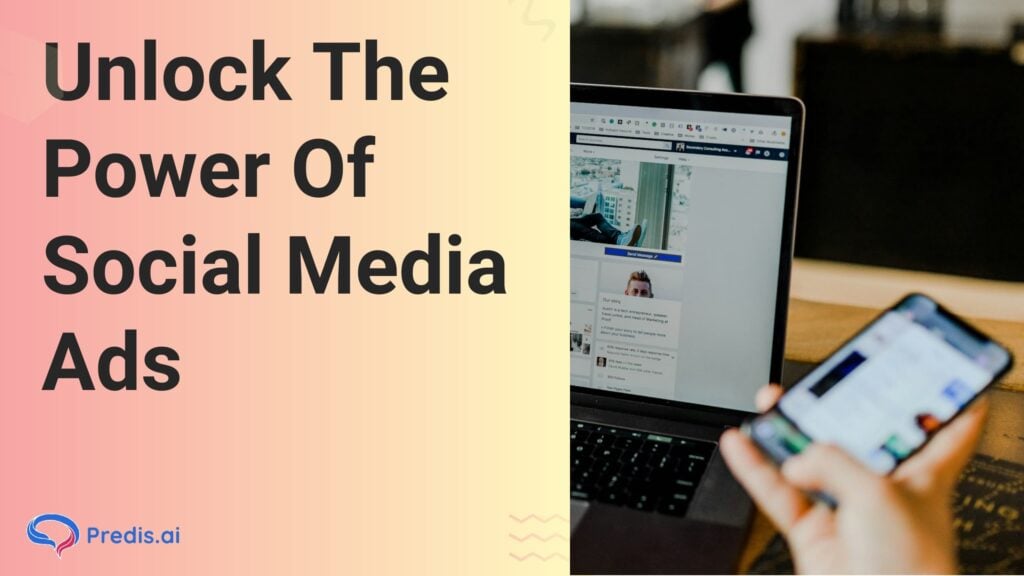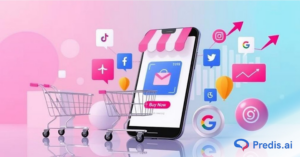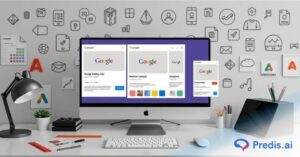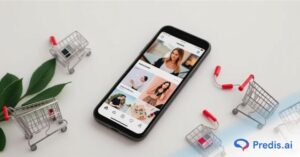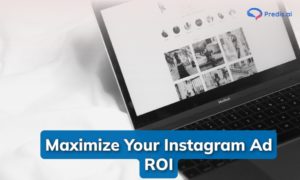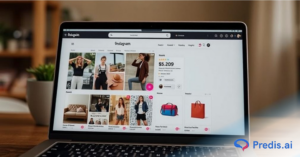Advertising is vital for businesses to drive sales, build brand awareness, distinguish themselves from their competitors, and support overall business development. Without advertising, businesses will not be able to communicate and engage effectively with their target audience. There are several ways to promote products each with its advertising techniques and use case scenarios.
Traditionally, businesses relied upon print, TV, and outdoor advertising. However, these advertising techniques had limited reach due to geographic, demographic, and budget constraints plus a lack of interaction. With the advent of the Internet social media advertising and its various advertisement types have bypassed these challenges and have gained predominance over traditional ad types.
Social media has now outgrown its tag as a news and entertainment provider and is being touted as the best form of direct contact with an audience. If used right, it can guarantee success and has evolved as a critical component of contemporary marketing and communication strategies.
Why is Social Media Advertising Important?
Social media advertising has a definite advantage over traditional advertising in reaching the bulk of a brand’s target audience and engaging with them on the platform where they spend a significant amount of time.
Businesses have now understood how the number of likes on Instagram and Facebook can positively influence consumer behavior with the social media ad spending likely to cross the US$300 billion mark in 2024.
| Platform | Reach % |
| 62.6 | |
| 10.79 | |
| YouTube | 9.57 |
| 7.99 | |
| 6.66 |
Social media ad types help businesses create cost-effective yet targeted marketing campaigns thus playing a crucial role in marketing strategies. Understanding the different types of social media advertising, tips, and related strategies is important for businesses to make an impact. Read on to learn more about the different social media advertisement types and how to use them effectively in this ultimate guide.
Social Media Ads- An Overview
Social media advertisements come in a variety of creative formats such as images, videos, or any other modes which guarantee an immersive user experience. Social media ads are visually attractive and camouflage well with the virtues of the social media platforms targeting user behavior and interests.
Social media ads do appear organically as a post in your feed but with a ‘sponsored’ or ‘promoted’ tag attached to it. These ads are an efficient way to familiarize the audience with a new product or event and there is no harm in allocating a budget for social media ads if you have the resources for it.
Anatomy of a Social Media Ad
Creating a successful social media ad involves more than just eye-catching visuals or clever copy. A well-structured ad has multiple components working together to engage the target audience, convey a clear message, and prompt action.
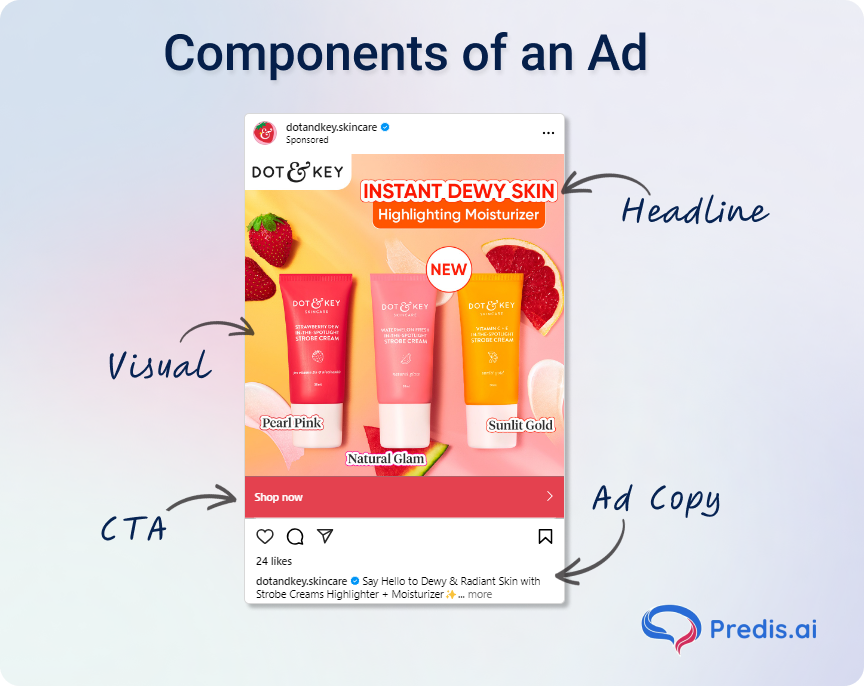
Here’s a detailed breakdown of the key elements, or the “anatomy,” of a social media ad, and how they function:
1. Visuals (Images or Videos)
The visual element of a social media ad is the first thing users notice. Whether it’s an image, video, or GIF, the visual must capture attention immediately. A striking image or compelling video can stop users mid-scroll and prompt them to engage with the ad.
2. Headline
The headline is a concise statement or question that delivers the ad’s core message. It appears above or alongside the visual and is meant to hook the audience right away.
3. Ad Copy
Ad copy provides more details and context for the ad, supporting the visual and headline. It’s where the advertiser explains the benefits of the product or service and highlights the call to action.
4. Call to Action (CTA)
The CTA is one of the most important components of a social media ad. It’s a prompt encouraging users to take a specific action, such as “Shop Now,” “Learn More,” “Sign Up,” or “Download.” A strong CTA can significantly impact the ad’s performance.
5. Landing Page
The landing page is where users are directed after clicking on the ad, and it’s a critical part of the ad’s effectiveness. A poor landing page can undo the work of a well-crafted ad, resulting in high bounce rates and lost conversions.
Social Media Platforms and Different Types of Social Media Ads
Now that we know the importance of social media ads, let us look at some of the different social media ad types and how they can be used effectively in the different social media platforms. You need to know which social platform your target audience is most active in and make sure to meet them there.
1. Facebook Ads:
With a reach of over 3 billion spread across a wide range of demographics, Facebook is undoubtedly an attractive social media platform for businesses to tap into their target audience.
This vast audience gives businesses the opportunity to target a wide range of people based on specific characteristics like demographics (age, gender, and location), behaviors (shopping preferences or online habits), and interests (such as hobbies like fitness, travel, or fashion). Essentially, Facebook helps brands reach the right audience for their product or service, making their advertising efforts more effective.
Precise Targeting: Reaching the Right People
One of the strongest advantages of Facebook Ads is the level of control you have over who sees your ad. Facebook’s targeting features allow you to narrow down your audience in many ways:
- Demographics: This includes basic information like age, gender, and education level, which helps businesses advertise to specific groups, such as college students or working professionals.
- Location: You can show your ads to people in a particular country, region, or even within a few miles of your business. This is especially useful for local businesses trying to attract nearby customers.
- Interests: Facebook tracks user activity, so you can target people based on their likes, hobbies, and the type of content they engage with. For example, if you run a fitness brand, you can show ads to users who follow health and wellness pages or interact with fitness-related content.
- Behaviors: Facebook also allows businesses to target users based on their behaviors, like online shopping habits or the devices they use. For instance, if you’re selling a high-end product, you might want to target people who frequently make online purchases or those who use a specific type of device.
This ability to reach specific audiences means businesses can ensure their ads are seen by people who are most likely to be interested, reducing wasted spending and improving ad performance.
Cost Effective Advertising
Facebook Ads are designed to fit any budget, making them accessible for small businesses as well as large corporations. You can decide how much you want to spend and control your daily or total campaign budget. Even with a smaller budget, it’s possible to see a strong return on investment.
Facebook’s ad platform operates on a bidding system, which determines how much you pay based on your desired outcome:
- Cost-per-click (CPC): This means you only pay when someone clicks on your ad. For example, if you run an ad with a CPC strategy, and it costs $0.50 per click, you’ll be charged every time a user clicks the ad.
- Cost-per-impression (CPM): With this option, you pay based on how many people see your ad, not just clicks. On average, CPM costs around $11 per 1,000 impressions. This can be a good option if your goal is brand awareness rather than immediate action.
This flexible pricing model allows businesses to experiment with their ad strategies and see which approach generates the best results.
Advanced Targeting Features
Facebook’s ability to precisely target specific groups of users gives it a unique advantage over many other advertising platforms. Let’s break down the key targeting options in more detail:
- Demographic Targeting: This feature allows businesses to focus on key characteristics like age, gender, job title, and even relationship status. For example, if a company sells wedding dresses, it can target women who are engaged and interested in wedding-related content.
- Geographic Targeting: Advertisers can tailor their campaigns to users based on their location. Whether you’re a global company wanting to reach multiple countries or a local business aiming to attract nearby customers, you can pinpoint exactly where your ads will appear.
- Interest-Based Targeting: Facebook collects data on user activity, so you can reach people who have shown interest in topics related to your product. For instance, if you’re promoting an outdoor gear brand, you can target users who like hiking, camping, or adventure sports.
- Behavioral Targeting: This feature allows you to reach users based on their past activities, such as their online shopping behavior, device usage, or purchase history. A business selling premium products might target users who frequently buy luxury items or use specific devices like high-end smartphones.
These targeting capabilities make Facebook Ads incredibly efficient. By showing your ads to the right audience, you can achieve higher engagement and better results.
High Return on Investment (ROI)
One of the reasons Facebook Ads are so popular is their potential for delivering a strong ROI. In fact, 70% of marketers say Facebook gives them the highest ROI compared to other advertising platforms. This is largely due to Facebook’s advanced targeting features and cost-effectiveness, which allow businesses to maximize their ad spend by reaching only the most relevant audience.
Let’s look at this platform’s different ad types and how to use them.
Types of Facebook Ads
A. Image Ads
This is one of the most common ad types featuring a single image to advertise and promote a product or offer. The success of the image ads lies in getting your message across clearly with a single visually appealing high-resolution image including any offer details or discounts. You can find these image ads in your feed or as banners.
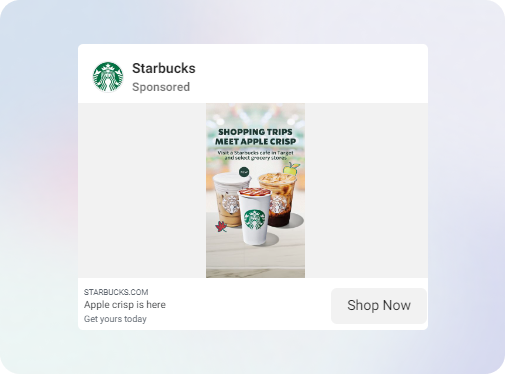
Follow these best practices and specifications for your image ads.
- Use a 1.91:1 to 4:5 placement ratio and include your brand logo in the ad.
- Show individuals using your product and include text in the image without obstructing it.
- Minimum width: 600 pixels
- Use a PNG or JPG file type of a maximum of 30 MB size for best results.
B. Video Ads
Video ads feature short 15-second videos 4GB in size to capture the attention of the audience to market a product or service. Video advertisements are more interactive and assist in a better understanding of the product or service.
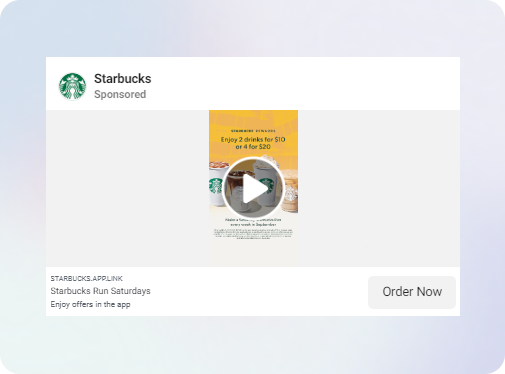
C. Carousel Ads
Viewers have the flexibility to flip and view multiple images or videos each with its link to landing pages, headlines, and calls to action (CTAs) that allow businesses to explain a process, tell a story, or advertise multiple products.
You can display the best images and videos at the beginning by utilizing the Facebook optimization option to attract and sustain the attention of the audience.
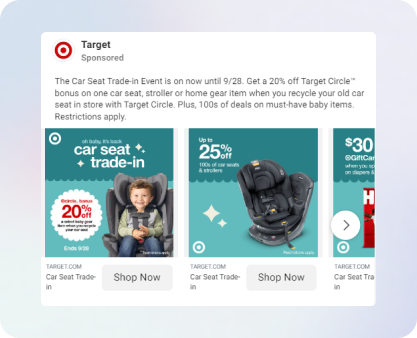
D. Messenger Ads
Messenger ads appear as a message in the user’s chat tab amidst other conversations. The user might be able to have an automated conversation with the business or the message can redirect them to the business page.
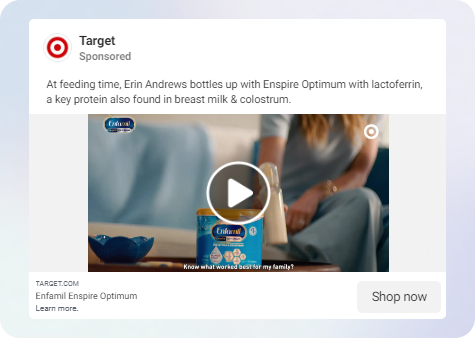
E. Stories Ads
These time-sensitive ads appear on top of the user’s feeds when they are scrolling through the stories of people they follow. Since a story ad is available only for 24 hours it urges the audience to view it immediately. Stories benefit small businesses and can comprise a video of 15 seconds, a photo of 5 seconds, or a carousel of photos. Including a QR code on these branded visual using tools like the QR Code Generator can help direct viewers to specific product pages or lead capture forms.
F. Collection Ads
One of the best types of ads features a short video or an image as a cover followed by multiple product images with complete pricing and details. Collection ads act as a virtual store allowing your audiences to purchase products using a link without leaving the social media platform. You can also check out Facebook augmented reality ads for more immersive experience.
2. YouTube Ads:
YouTube Ads are paid advertisements that appear across YouTube’s vast platform, which has over 2.49 billion active users worldwide as of March 2024. These ads help businesses reach their target audience by displaying content in videos, search results, or on the YouTube homepage. With the ability to target users based on their interests, demographics, and behaviors, YouTube Ads offer a powerful way for businesses to engage potential customers.
YouTube brings in over US$29 billion in revenues annually making it one of the best social media platforms to display your ads on. Also, studies point out that more than half of YouTube users believe that the ads are relevant subsequently resulting in better conversions.
How YouTube Ads Work?
YouTube Ads operate on a bidding system, just like Facebook Ads. You set a daily or total campaign budget, and YouTube uses an auction process to show your ads to relevant users based on your targeting options and bid amount.
- Cost-per-view (CPV): This is the most common bidding method, where you only pay when a user watches your video ad for at least 30 seconds or clicks on it. The average CPV on YouTube is between $0.05 to $0.30 depending on the industry and competition.
- Cost-per-impression (CPM): You pay based on every 1,000 impressions (views), which is best suited for increasing brand visibility. The average CPM for YouTube Ads is $15.34.
Targeting Options on YouTube Ads
YouTube offers robust targeting features to ensure your ads reach the right audience. These include:
- Demographic Targeting: Just like on Facebook, you can target users based on age, gender, parental status, and more. For example, a brand selling baby products can show ads to parents of toddlers.
- Interest-Based Targeting: You can show ads to users who have engaged with specific types of content, such as beauty tutorials, fitness videos, or tech reviews.
- Behavioral Targeting: YouTube tracks users’ online activities, allowing advertisers to target people based on recent behaviors, such as making online purchases or visiting websites related to your product.
- Remarketing: You can also re-target users who have previously interacted with your brand by visiting your website, subscribing to your channel, or watching your videos. This is highly effective for increasing conversions.
Types of YouTube Ads
A. Bumper Ads
These ads appear alongside YouTube search results or as related video suggestions. They are best suited for increasing visibility and engagement since they target users who are actively searching for related content. These are displayed on top of your video suggestions on the sidebar.
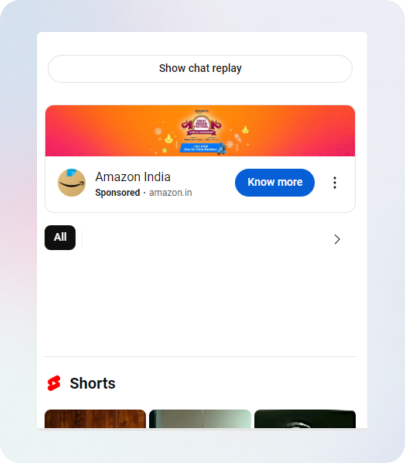
B. In-Stream Ads
These ads play before or during a video and can be skipped after 5 seconds. They are ideal for brand awareness and broad reach. Advertisers only pay when viewers watch at least 30 seconds or click on the ad. According to Statista, 66% of consumers say they skip ads automatically when they are allowed to. These are ads that can be skipped after 5 seconds.
C. Non-Skippable Long and Short Ads
As the name suggests, these ads cannot be skipped and are typically shorter, lasting 15 seconds. They’re great for delivering a concise message when you want guaranteed views. These non-skippable 15-second and 30-second ads need to be watched fully before users can view the main video.
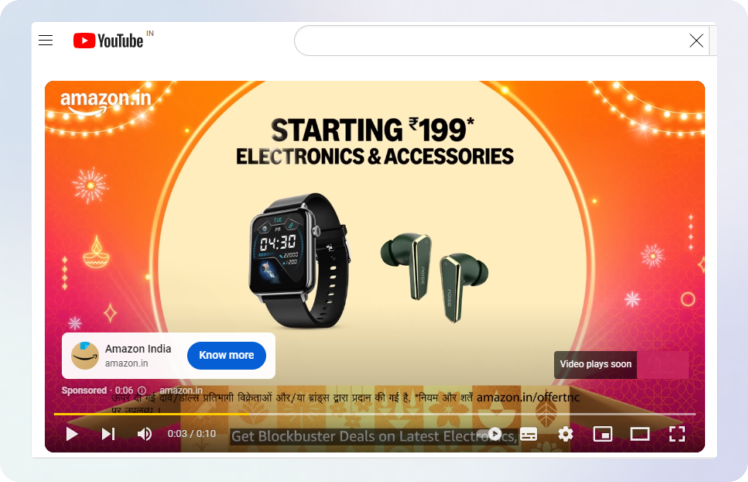
D. Masthead Ads
These ads are premium placements that appear on the YouTube homepage. They offer high visibility and are ideal for large campaigns that aim to reach millions of users. According to YouTube, homepage ads can reach up to 60 million users per day.
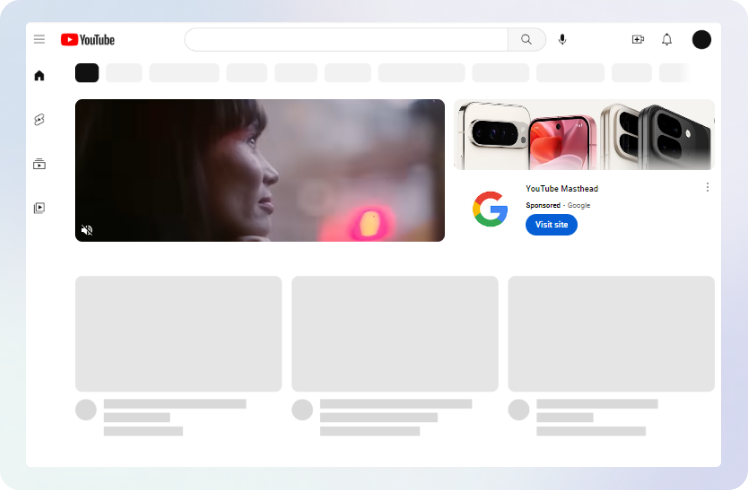
3. Instagram Ads:
These ads are seamlessly integrated into users’ feeds, Stories, Explore pages, and more, allowing businesses to reach their target audience with visual content. Instagram Ads leverage Facebook’s advanced targeting options, meaning advertisers can deliver highly relevant ads to specific users based on their interests, behaviors, and demographics.
If you have a product that appeals to the audience’s optical senses then Instagram with its massive fan base is the right choice. Encompassing the youngest audiences and ranking second in user engagement rates this picture-sharing app is one of the best business tools.
Image, video, carousel, collection and story ads work well for Instagram and might slightly differ in their specification requirements.
Why Use Instagram Ads?
Instagram has evolved from a simple photo-sharing app to a major player in digital marketing. The platform is particularly effective for brands aiming to engage younger, visually-driven audiences, with 75% of users aged 18 to 24. Here’s why businesses choose Instagram Ads:
- Massive Audience: With over 2 billion active users, Instagram offers businesses access to a huge, diverse audience. Whether you’re a small local business or a global brand, Instagram allows you to scale your advertising efforts.
- Highly Engaging Platform: Instagram users are more likely to engage with content compared to other social media platforms. In fact, Instagram boasts 10 times higher engagement rates than Facebook. For brands looking to build a strong community, this platform is ideal.
- Visual Storytelling: Instagram is all about visuals. Its ad formats—whether photos, videos, or Stories—allow brands to showcase products and services in an eye-catching, immersive way.
How Instagram Ads Work?
Instagram Ads, like Facebook Ads, operate on a bidding system. You can set your budget and bid for how much you’re willing to spend on a specific action (e.g., clicks, impressions). There are two common pricing models:
- Cost-per-click (CPC): You pay when someone clicks on your ad. The average CPC on Instagram is around $0.03 to $0.08, depending on your industry and target audience.
- Cost-per-impression (CPM): You pay for every 1,000 impressions (views). The average CPM is around $6.70 on Instagram, making it more affordable than other platforms like LinkedIn.
Targeting Options for Instagram Ads
Instagram uses the same powerful targeting features as Facebook, giving advertisers plenty of ways to reach the right people. Key targeting options include:
- Demographic Targeting: Target by age, gender, education level, job title, and more. For example, a skincare brand might focus on women aged 18-35 with an interest in beauty and cosmetics.
- Interest-Based Targeting: Instagram tracks users’ activity on the platform, allowing you to target ads based on what people follow, like, or engage with. A fitness brand, for instance, could target users who follow health and wellness influencers.
- Location-Based Targeting: Whether you want to reach people in a specific country, city, or even within a mile of your store, location-based targeting helps you hone in on the right geographical audience.
- Behavioral Targeting: Instagram ads can also be shown based on users’ behaviors, such as recent online purchases, mobile device usage, or app activity. For example, you could target users who have recently shopped for similar products or services.
- Lookalike Audiences: Instagram also allows advertisers to target people who resemble their existing customer base through Lookalike Audiences. This is a great way to expand your reach to potential customers who have similar interests and behaviors to your best-performing clients.
Types of Instagram Ads
A. Explore Feed Ads
These ads appear in the Explore section, where users go to discover new content. Explore ads allow businesses to reach users who are actively looking for inspiration and new brands. 50% of Instagram users explore content on this page daily, making it an ideal spot for discovery.
This is a new section in Instagram and the ads in this section are curated for each user. If you create an ad that can appear in a customer’s explore section then your content has reached a potential customer and is your target audience.
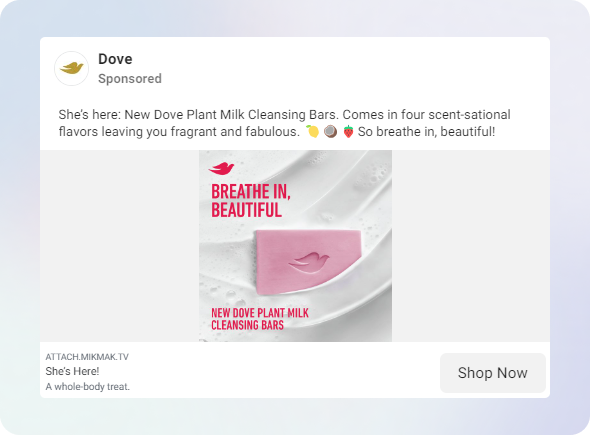
B. Reels Ads
You can create short video clips of 30 seconds accompanied by music and sound and these do not disappear within 24 hours like shorts. Video ads can be up to 60 seconds long and are perfect for delivering a more dynamic message. Research shows that 75% of Instagram users take action after watching a video, whether that’s visiting a website or making a purchase.
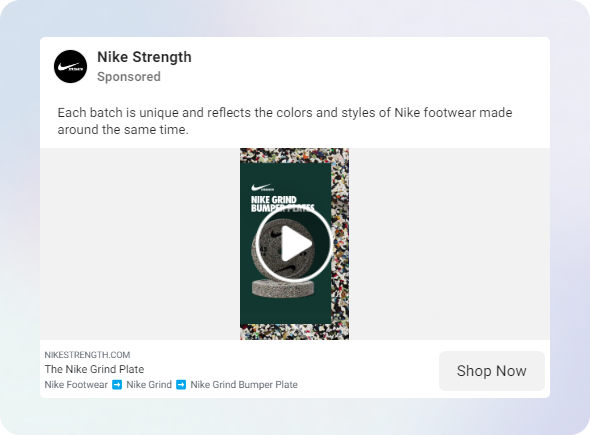
C. Shopping Ads
These ads include a shopping tag that lets users click directly on a product and purchase it without leaving the app. Instagram Shopping is a game-changer for e-commerce, with millions of users tapping on shopping posts every month.
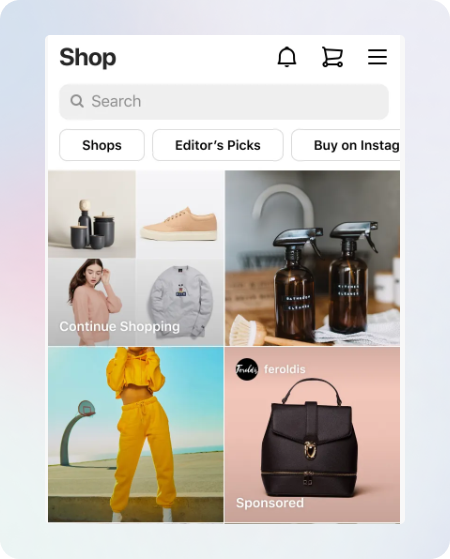
D. Carousel Ads
This format lets users swipe through multiple images or videos within a single ad. Carousel ads work well for showcasing multiple products or different features of a single product, boosting engagement by up to 25% compared to single-image ads.
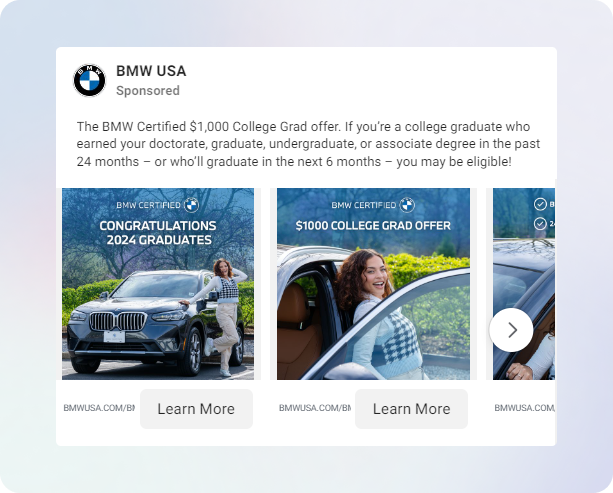
E. Stories Ads
Stories ads appear between Instagram Stories and are full-screen, immersive experiences. Because Stories disappear after 24 hours, they encourage immediate engagement—perfect for pairing with an app qr code to drive traffic fast. Over 500 million people use Instagram Stories every day, making it a key space for brands to capture attention.
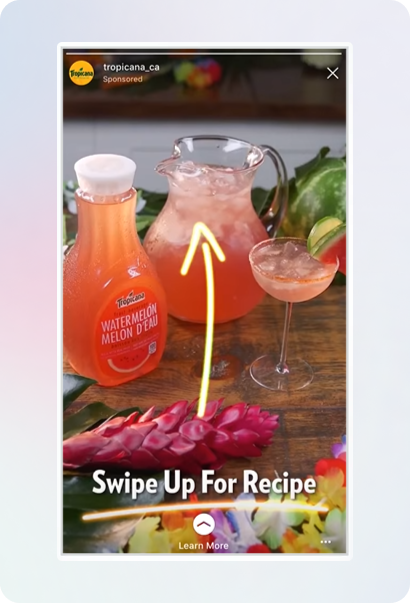
4. LinkedIn Ads:
This is the world’s largest professional network and when other social platforms are great for B2C, LinkedIn is suited for B2B marketing. These ads help brands reach a highly targeted, professional audience, making LinkedIn a powerful platform for B2B (business-to-business) marketing, job recruiting, and professional services. Leading B2B marketing agencies consider LinkedIn Ads an essential tool for driving awareness, engagement, and conversions within professional networks.
Why Use LinkedIn Ads?
LinkedIn Ads are particularly effective for businesses targeting a professional audience or decision-makers within industries. Here are a few key reasons businesses choose LinkedIn Ads:
- Access to Decision-Makers: LinkedIn offers a direct line to executives, professionals, and industry leaders, with 4 out of 5 members driving business decisions. This makes it an excellent platform for B2B companies aiming to reach people in influential positions.
- Targeting a Professional Audience: LinkedIn users typically include professionals seeking business opportunities, career growth, or industry insights. Therefore, it’s an ideal platform for companies offering business solutions, professional services, and educational content.
- Higher Conversion Rates for B2B: LinkedIn Ads typically generate 2x higher conversion rates for B2B businesses compared to other social platforms, making it a powerful tool for lead generation and sales.
How LinkedIn Ads Work?
Like other platforms, LinkedIn Ads operate on a bidding system, allowing advertisers to set a budget and bid for ad placement. You can choose between several pricing models depending on your goals:
- Cost-per-click (CPC): You pay when someone clicks on your ad. This is best for campaigns focused on driving website traffic or generating leads. The average CPC for LinkedIn Ads is higher than other platforms, ranging from $5 to $9 due to the platform’s professional user base.
- Cost-per-impression (CPM): You pay based on how many times your ad is shown, usually per 1,000 impressions. This is ideal for building brand awareness. The average CPM on LinkedIn is around $6.50 to $12.00.
- Cost-per-send (CPS): This is specific to Sponsored Messaging. You pay for each message sent to a user’s inbox. With an open rate of over 50%, Sponsored Messaging can be highly effective, though CPS typically ranges from $0.50 to $1.00 per message.
Types of LinkedIn Ads
A. Sponsored Content
These are native ads that appear directly in users’ LinkedIn feeds, blending seamlessly with organic posts. Sponsored Content is ideal for sharing blog posts, eBooks, or promotional content. 55% of LinkedIn users engage with Sponsored Content, making it the most commonly used ad type.
B. Video Ads
These ads appear in users’ feeds and are great for sharing video content such as brand stories, product demos, or customer testimonials. Video Ads on LinkedIn can result in 30% higher engagement rates compared to static image ads.
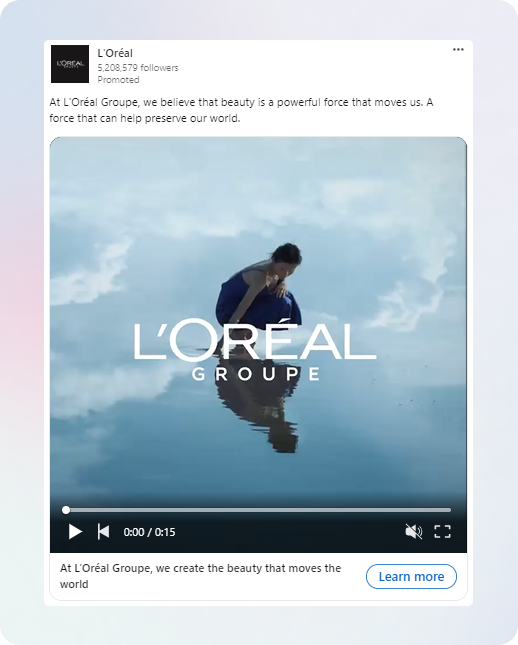
C. Carousel Ads
Like Instagram or Facebook Carousel Ads, creating LinkedIn Carousel Ads allows businesses to showcase multiple images or offers in a single, swipeable ad. These ads are highly engaging and work well for storytelling or showcasing multiple products.
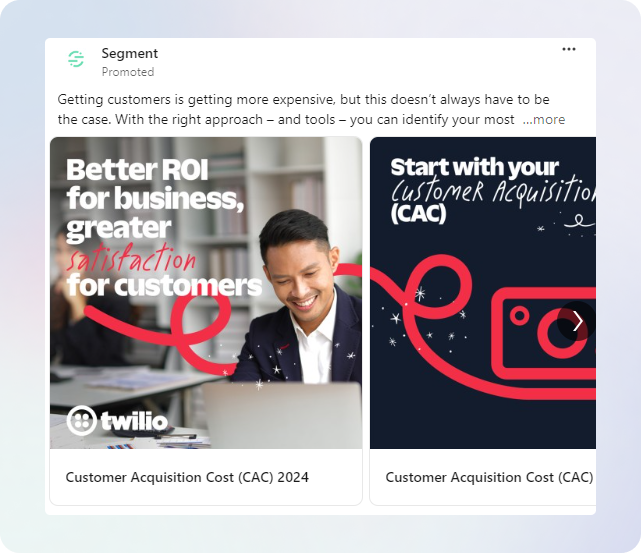
D. Message Ads
This type of ad targets prospective customers by sending direct messages to their inboxes aimed at immediate action and conversions.
5. X/Twitter Ads:
One of the more popular social media platforms famous for its breaking news and ease of engaging with big and small players. Twitter Ads are paid advertisements that allow businesses and individuals to promote their products, services, or content directly on Twitter. With 245 million daily active users as of 2023, Twitter offers a platform where businesses can engage with users in real-time, take part in trending conversations, and reach a global audience. Twitter Ads are especially effective for companies looking to build brand awareness, foster engagement, or drive traffic to a website.
Why Use Twitter Ads?
Twitter is known for its conversational nature, making it an ideal platform for brands to engage directly with their audience. Here’s why businesses choose Twitter Ads:
- Real-Time Engagement: Twitter is the go-to platform for discussions around live events, breaking news, and trending topics. This allows brands to connect with users as they participate in real-time conversations. 79% of Twitter users like to discover what’s happening in the world and respond to breaking news, which presents unique marketing opportunities.
- Wide Reach: With millions of users worldwide, Twitter allows advertisers to reach diverse audiences. It’s a key platform for businesses aiming to target people based on specific interests, behaviors, or conversations.
- Higher Engagement Rates: Twitter users are highly engaged, with research showing that 40% of users made a purchase after seeing a product advertised on Twitter. The conversational nature of the platform encourages immediate interactions, replies, and retweets, fostering community and brand loyalty.
The exclusive ad formats for this platform are:
A. Promoted Tweets
These are regular tweets that businesses pay to display to a broader audience. They appear in users’ timelines, marked as “Promoted,” and can include text, images, or videos. Promoted Tweets are ideal for increasing engagement or promoting content. 41% of Twitter users said they engage with ads by liking, retweeting, or commenting.
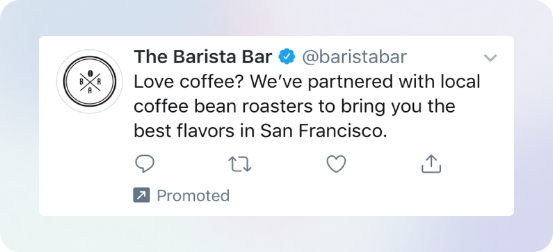
B. In-stream Video Ads
These are short videos that are featured in a user’s feed.
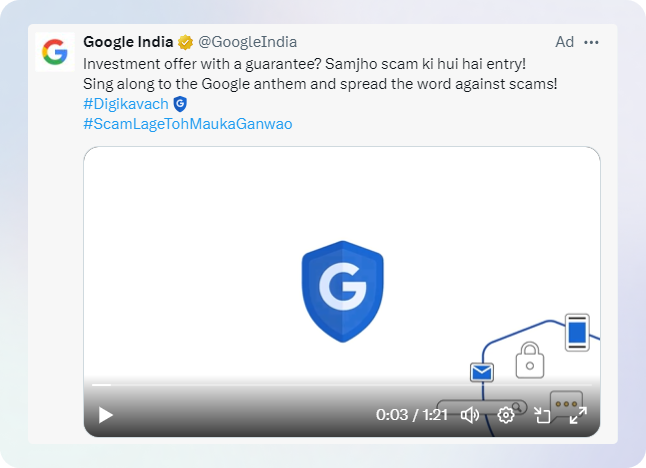
C. Promoted Trends
Promoted Trends are ads that appear in the trending topics section. These are particularly effective for sparking conversations around a brand or campaign. For example, Coca-Cola used Promoted Trends during their “#ShareaCoke” campaign, which led to 125,000 uses of the hashtag in just one day.
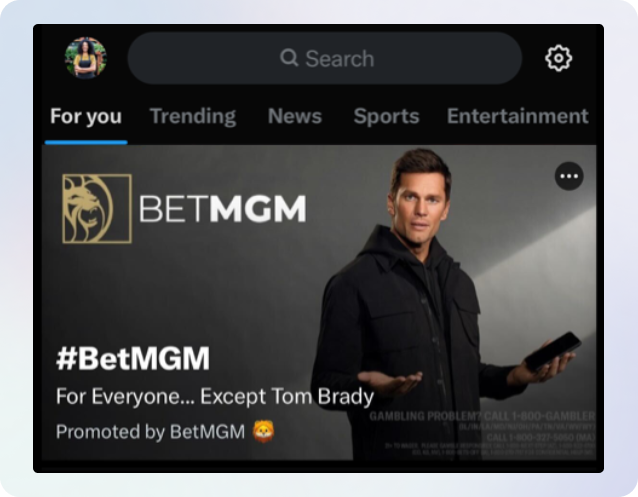
D. Collection Ads
Collection ads are a relatively new and engaging ad format that allows businesses to showcase multiple products in a single ad, enhancing the user experience and driving higher conversions. They are designed to help brands, especially in e-commerce, to promote multiple products seamlessly within the Twitter platform.
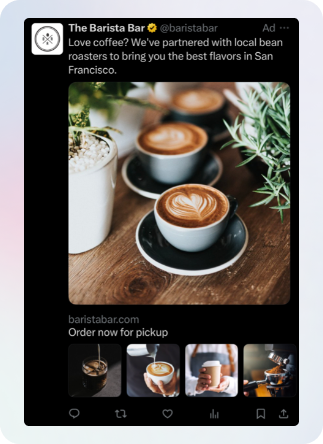
E. Amplify Ads
These ads target customers who are already engaged with content similar to your business and use pre-existing customers. This format allows advertisers to promote video content alongside premium content from popular media partners. For example, sports brands can promote ads during live sports events, reaching users who are already engaged with the event. Amplify ads generate a 28% lift in purchase intent compared to non-visual ads.
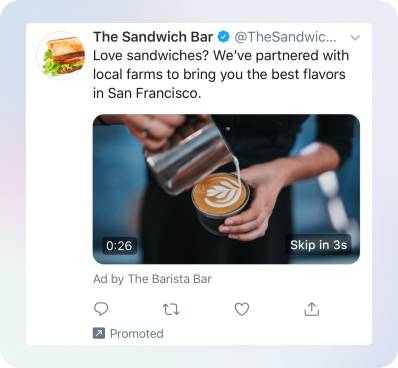
Why Twitter Ads Stand Out?
- Real-Time Engagement with Trending Conversations: Twitter’s focus on real-time events and conversations makes it a perfect platform for brands looking to connect with users during live events, holidays, or industry-specific moments. Businesses that tap into trending topics can often see immediate engagement boosts.
- Direct Access to Niche Audiences: Twitter’s detailed targeting features allow businesses to focus on specific conversations, interests, and behaviors. Whether you’re a tech startup or a fashion brand, Twitter Ads let you reach users who are already talking about what matters to your business.
- Cost-Effective Ad Spend: Twitter’s average CPC tends to be lower than some other platforms, making it a cost-effective option for businesses, particularly those with smaller budgets.
6. Pinterest Ads:
Pinterest is a visual discovery platform where users (known as “Pinners”) explore ideas, plan projects, and discover new products. Ads on Pinterest seamlessly integrate into users’ feeds, making them appear as part of the natural browsing experience. Businesses use Pinterest Ads to drive brand awareness, website traffic, and sales, especially in industries like fashion, home decor, travel, and food.
Users come to Pinterest with an intent to discover and buy new products or gather ideas for their next purchase, making it an ideal platform for advertisers.
Here’s why businesses choose Pinterest Ads
- High Purchase Intent: People use Pinterest to plan for life events, projects, or future purchases. In fact, 97% of Pinterest searches are unbranded, meaning users are open to discovering new brands. This gives businesses an opportunity to introduce their products to people who are ready to buy but haven’t decided what to purchase yet.
- Discovery and Inspiration Platform: Users come to Pinterest for inspiration, whether it’s for a new wardrobe, home decor project, or a recipe. This makes Pinterest an excellent place for advertisers in lifestyle categories to showcase their products in a way that feels organic and helpful.
- Highly Engaged Audience: 83% of Pinterest users make purchases based on content they see from brands on the platform. This high engagement rate makes Pinterest Ads effective for driving not only brand awareness but also direct sales.
Types of Pinterest Ads
It uses a highly targeted search engine to help businesses capture customer attention and enhance engagement. In addition to the standard, video and carousel ads, businesses can use the following:
A. Promoted Pins
These are standard pins that businesses pay to promote so they appear in relevant users’ feeds, search results, or related pins. Promoted Pins look like regular pins, but with a “Promoted” label, and they stay on Pinterest even after the campaign ends, offering continued engagement. These ads are ideal for driving website traffic and can increase pin engagement by up to 60%.
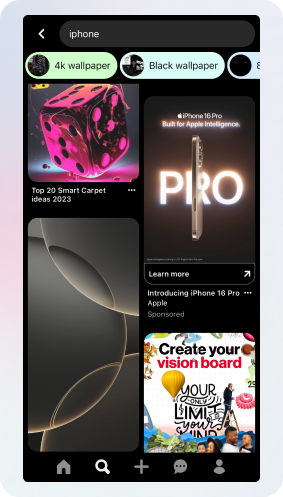
B. Carousel Ads
These ads let users swipe through multiple images in a single ad, offering more variety or telling a story. Carousel Ads are excellent for showcasing a range of products or different aspects of a single product. Brands using Carousel Ads have reported 2-3x higher conversion rates compared to single-image ads.
C. Promoted Video Pins
Similar to Promoted Pins but in video format, these ads are great for storytelling, product demos, or highlighting how a product works. Pinterest users are 2.6x more likely to make a purchase after viewing video content on the platform. Video ads on Pinterest can increase purchase intent by 53%.
D. Idea Pin Ads
These are multi-page ads that can help a business showcase their products and drive home their unique personality thus increasing sales. These are similar to Instagram or Facebook Stories, but they stay on Pinterest permanently. They allow brands to share a multi-page story with images, videos, or text to inspire users. Idea Pins are great for brand building and storytelling, helping users visualize how to use a product or service.
Pinterest Ads are particularly effective for industries like retail, home decor, food, fashion, and DIY, where visual inspiration leads to purchases. Businesses often see high engagement rates on Pinterest Ads, especially in the planning and discovery stages of the consumer journey.
- Engagement Rates: Pinterest Ads tend to have higher engagement rates compared to traditional display ads. In fact, Pinterest Ads drive 3.8x more sales compared to other social platforms because users are often in the mindset of planning or making purchases.
- Conversion Rates: Pinterest Ads also perform well in terms of conversion. A recent study showed that Pinterest has an average conversion rate of 1.5% to 2.5%, depending on the product category, which is comparable to other high-performing platforms like Facebook.
7. Snapchat Ads:
This casual social media platform is a hit among millennials and is a great opportunity for businesses to promote their products. Snapchat is especially popular with younger audiences, particularly Gen Z and Millennials, with 48% of U.S. users aged 15-25. These ads are designed to engage users through immersive, full-screen experiences. Whether you’re promoting products, driving app downloads, or building brand awareness, Snapchat Ads allow businesses to reach a visually-driven, mobile-first audience.
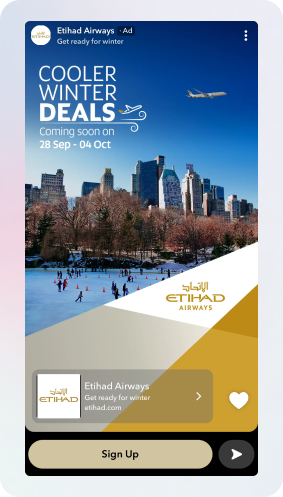
Here’s why businesses invest in Snapchat Ads
- Access to a Younger Audience: Snapchat is one of the few platforms where 82% of users are under the age of 34. If your target audience includes teenagers or young adults, Snapchat Ads can be a key way to reach them.
- Mobile-First Experience: Snapchat’s vertical, full-screen ad formats are designed for mobile, offering an immersive experience for users. This format allows advertisers to engage users without distractions. In fact, 64% of Snapchat users say they are likely to swipe up on ads they find interesting.
- High Engagement with Visual Content: Snapchat’s emphasis on video, filters, and augmented reality (AR) makes it perfect for brands looking to create fun, interactive ads. Research shows that Snapchatters are 60% more likely to make an impulse purchase after engaging with an interactive ad.
Types of Snapchat Ads
Snap Ads: These are vertical, full-screen video ads that appear between users’ stories and content in Discover. Snap Ads can include a call-to-action like “Swipe Up” to drive users to your website, app, or video. Snap Ads are the most common format, with average swipe-up rates of 5x higher than the average CTR on other social platforms.
A. Commercials
Commercials often found among Snapchat’s curated content cannot be skipped and can run up to 3 minutes. This type of ad can be used to create brand awareness. They appear within Snapchat’s premium content, such as original shows, and are ideal for increasing brand awareness. Commercials have completion rates of over 90%, making them a great way to ensure your message gets across.
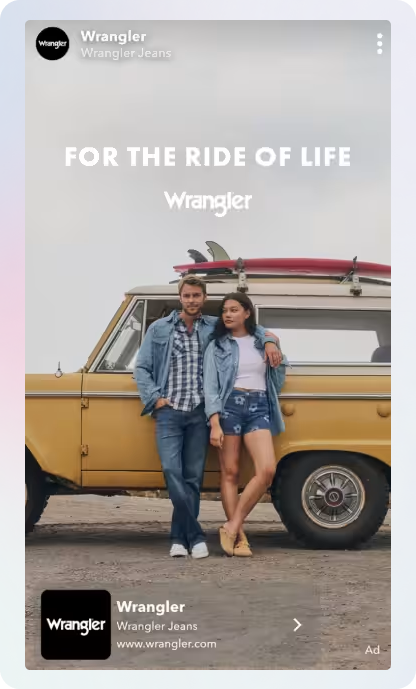
B. Filter Ads
Filter ads as the name suggests use Snapchat’s inbuilt artistic filters to drive conversions. Filters are customizable overlays that Snapchat users can add to their photos and videos. Brands can create location-based or event-based filters to promote special occasions or product launches. These filters are popular for encouraging user-generated content and boosting brand visibility.
C. Lenses AR Ads
Businesses can utilize augmented reality to make interactive advertisements. Snapchat Lenses use augmented reality (AR) to let users interact with your product in a fun and immersive way. For example, a beauty brand can create a Lens that lets users “try on” makeup virtually. Lenses are highly engaging, with 70% of Snapchat users interacting with AR every day. Studies show that Lenses can increase brand awareness by 34%.
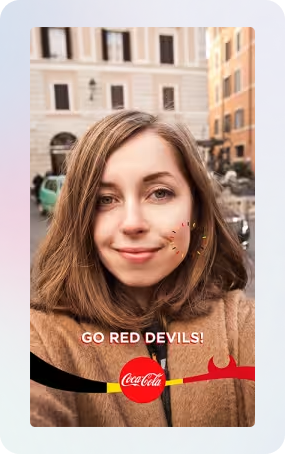
With its focus on immersive, mobile-first experiences, Snapchat delivers strong engagement rates, especially for brands using video, filters, or AR.
- Engagement Rates: On average, Snap Ads generate a 2x higher swipe-up rate compared to the average click-through rate (CTR) on other social media platforms. This high engagement is attributed to Snapchat’s interactive and creative ad formats.
- Conversion Rates: The conversion rate for Snapchat Ads depends on the industry, but e-commerce brands often see significant results. A study by Shopify revealed that Snapchat Ads deliver a 1.5x higher conversion rate than Instagram for direct-to-consumer brands.
8. TikTok:
The social media platform encompasses an enormous potential for advertising and the audience numbers increasing by leaps and bounds. TikTok is particularly popular with younger audiences, especially Gen Z, who make up 60% of its user base.
TikTok Ads allow businesses to showcase their products and services through creative, short-form video content that blends seamlessly into users’ “For You” feeds. These ads provide a highly engaging, immersive way to reach a global audience through music, trends, and visual storytelling.
Types of TikTok Ads
A. In-Feed Ads
These ads appear as native videos within users’ “For You” feed. They blend seamlessly with organic content and include a call-to-action (CTA) such as “Shop Now” or “Learn More.” In-feed ads can be up to 60 seconds long but are most effective at 9-15 seconds. These ads offer excellent visibility and can drive high engagement, with TikTok in-feed ads delivering an average CTR of 1.41%.
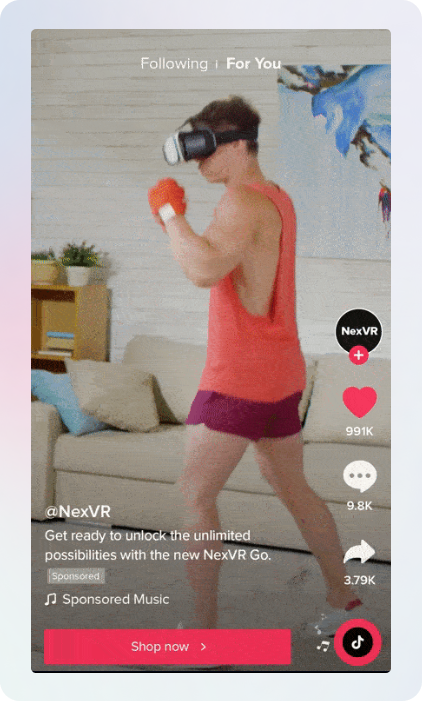
B. Collection Ads
These are designed for e-commerce brands and allow users to browse products directly within TikTok. They feature a combination of product cards and videos, creating a seamless shopping experience that encourages direct purchases from the app.
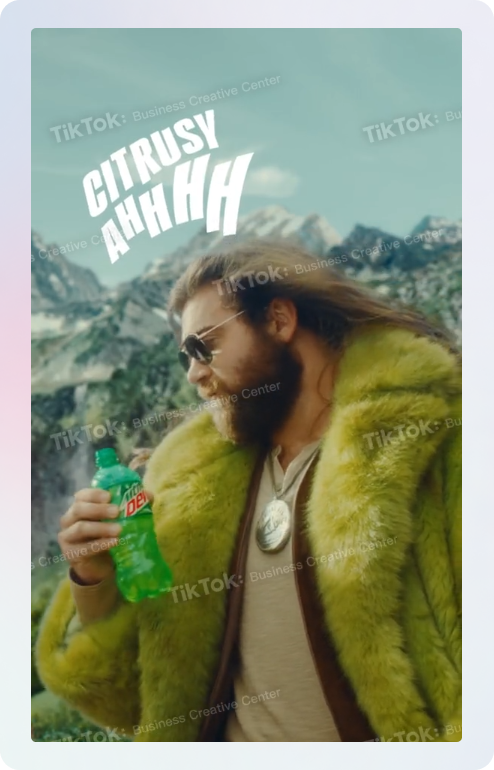
C. Branded Effects
These are custom filters, stickers, or augmented reality (AR) elements that users can interact with in their TikTok videos. Branded Effects often encourage user-generated content and increase brand engagement. For instance, TikTok AR effects have been shown to increase interaction time by 38% compared to non-interactive ads.
The platform’s unique algorithm and immersive ad formats result in high engagement rates, making TikTok a powerful platform for driving awareness, engagement, and conversions.
- Engagement Rates: TikTok Ads have some of the highest engagement rates in social media advertising. 67% of TikTok users say that TikTok Ads capture their attention more than ads on other platforms.
- Conversion Rates: Depending on the industry, TikTok Ads can drive strong conversions. For e-commerce brands, TikTok Ads have an average conversion rate of 1.22%, comparable to Instagram and Facebook.

Steps for an Effective Social Media Campaign
Choosing the best paid social media ad can be overwhelming given the exponential growth of social media marketing. Follow these steps to make your social media ad campaigns “click” on all social media platforms.
1. Set Clear Goals
Setting reachable business goals for your ad campaign strategies is important for its success and can guide your advertising strategies. Decide if you want to increase engagement, drive sales, or create awareness.
2. Know Your Target Audience
Knowing your target audience helps to create compatible ad content. Conduct an extensive study to understand your audience demographics and online activities.
3. Choose the Right Social Media Platform
Select the social media platform where your target audience is more active. For e.g. If you want to appeal to professionals choose LinkedIn and not TikTok.
4. Create Compelling Content
Create scroll-stopping content using AI tools for Twitter, LinkedIn, and other social media platforms for the best results.
5. Repurpose, Monitor, and Adjust
Try not to use the same content for all ad formats across all social media platforms. Try to repurpose your content for different platforms. Experiment with different captions, ad formats and ad copies to understand which type of ad performs the best.
6. Track your Conversions
Choose the most apt advertising formats for your objectives and monitor their performance. Tweak the ads accordingly for better results. Track your conversions and Return on Investments (ROI) to measure the success of your ad campaign.
You can also utilize various strategies to ensure that your social media content reaches your target audience.
7. Setting a Budget
Set a budget well within your marketing budget. Base your budget and frequency on the social media platform you are interested in as the Cost per Click (CPC) and Cost per Impression (CPM) vary between platforms.
Final Thoughts
Organic reach and paid social media advertising can work in tandem for a wholesome social media marketing strategy. Though organic reach is free it depends on algorithms and you need to be consistent with your timing to taste success. But if you are looking for some quick success then paid social media is the right way forward.
Despite knowing the different types of social media ads and their components you might sometimes fall short of what you wanted to achieve. Why worry when you have the power of AI at your disposal? Predis.ai generates visually stunning customized social media ads that speak the language of your brand voice.
So, what are you waiting for? Sign up for an account on Predis.ai and convert your text input into a wide range of creatives for different social media platforms.
Related Content,
How to Identify and Minimize Ad Fatigue? What is it?


